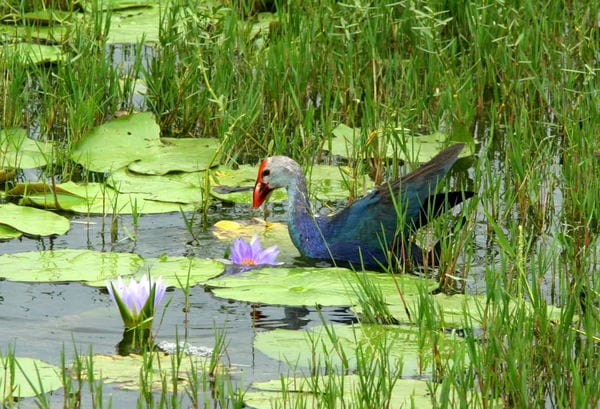Most of us in our city would have gone to Lalbagh (or any of the other lakes) at some time or the other… but the next time you do, do go to the lake and look at one very common bird…so common that we often do not see the incredible beauty it is!

Purple Moorhen with Waterlily. Pic: Deepa Mohan
This is the Purple Moorhen, or the Purple Swamphen. The colours of this purple bird shine iridescently in the sunshine, and it looks as if it’s got bright red lipstick on!
You can find these birds in large numbers, clambering along the reeds on the lake. With their long legs, they are able to walk easily on the lily pads (leaves). They eat the tender shoots and the vegetable matter; they also, on occasion, eat snails, eggs, small fish… and ducklings! So they can be called omnivores.
An interesting fact is that ancient Romans regarded these as noble birds, and did not eat them! They were kept as decorative birds in the mansions of the wealthy. However, they do not seem to form part of the regular diet of non-vegetarian Kannadigas!
They make a lot of cacophonic, unbird-like noise, and often fight with each other.. so they are great fun to watch. Enjoy the shimmering purple of these birds on your next visit to Lalbagh, Puttenahalli, or any of the lakes that dot our city!